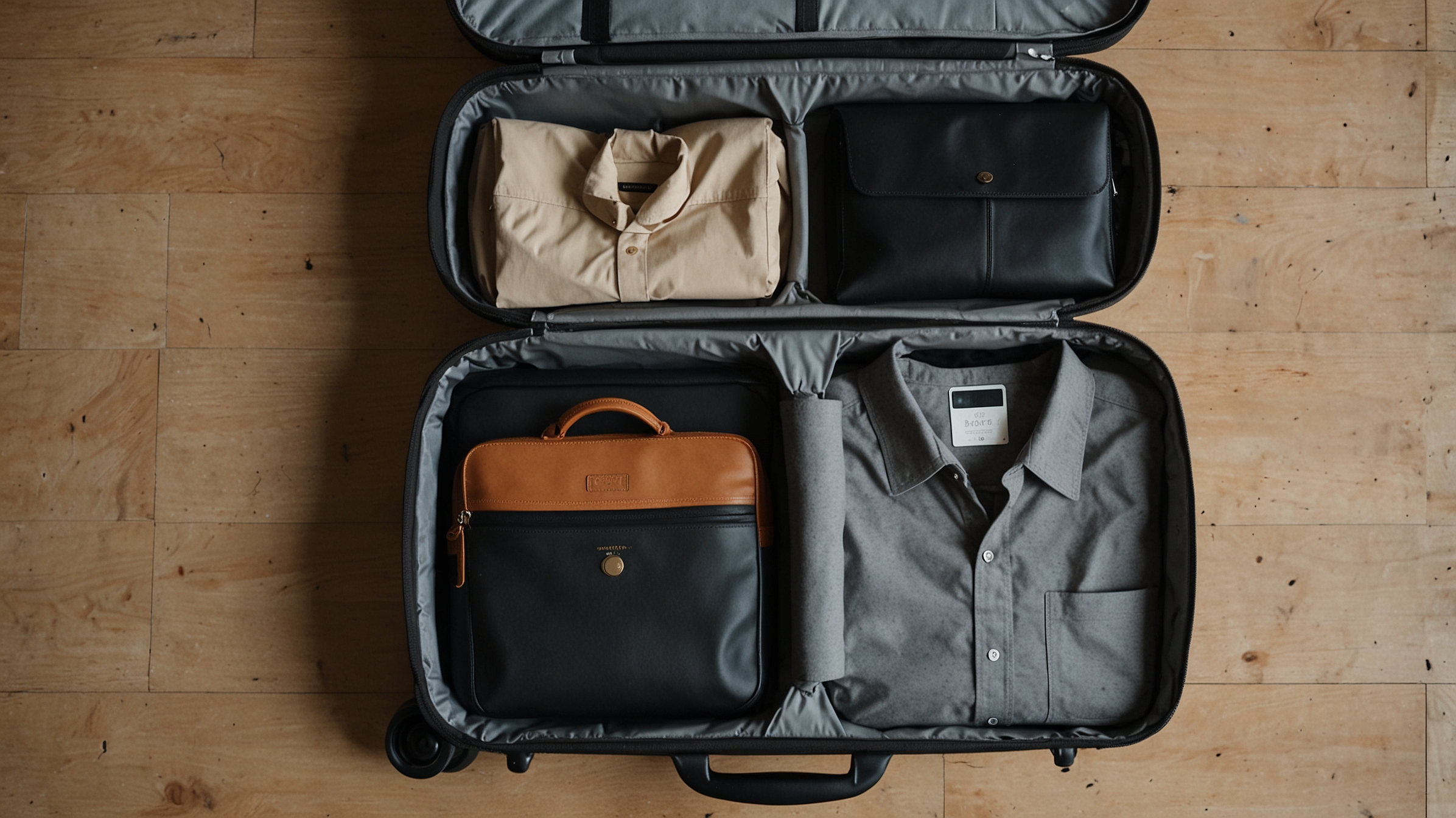Travel smarter, move faster, and stress less
There’s something deeply freeing about traveling light. No baggage claim lines, no dragging oversized suitcases through cobbled streets, and no last-minute panic over weight limits at the airport. Packing everything you need into a single carry-on isn’t just possible—it’s a skill worth mastering.
Whether you’re heading out for a weekend getaway or a 10-day adventure, packing light can make your trip more enjoyable, flexible, and spontaneous. Here’s how to master the art of the carry-on bag—without feeling like you left half your life behind.
Why Packing Light Is the Way to Go
Let’s start with the benefits:
- Speed: Skip check-in and baggage claim.
- Savings: Avoid extra airline fees.
- Security: You keep your belongings with you.
- Simplicity: Less to manage, less to lose, and more room for experiences.
Packing light encourages intentionality—it’s about curating, not cramming.
Choose the Right Carry-On
Your success starts with the bag itself. Here’s what to look for:
- Size: Check airline-specific carry-on limits (typically around 22 x 14 x 9 inches).
- Weight: Opt for lightweight materials to give you more room for gear.
- Compartments: Interior sections, compression straps, and outer pockets help organize efficiently.
- Wheels or no wheels? Spinner wheels offer convenience, but a soft-sided backpack may be better for stairs and tight spaces.
Pro tip: A structured, expandable soft-shell case gives you a few extra inches of flexibility without risking overpacking.
Build a Travel Capsule Wardrobe
When it comes to clothing, versatility is king. Stick to a neutral color palette with a few accent pieces, and focus on layering.
Here’s a basic formula for a week-long trip:
- 3–4 tops (mix of short and long sleeve)
- 2 bottoms (pants, shorts, or skirts)
- 1 dress or jumpsuit (optional)
- 1 lightweight jacket or sweater
- 1–2 pairs of shoes (wear the bulkiest pair)
- 1 set of workout clothes/swimwear
- Undergarments and socks for 5–6 days (hand-washable if needed)
Everything should mix and match effortlessly. Choose wrinkle-resistant, quick-dry fabrics to reduce bulk and laundry needs.
Roll, Don’t Fold (And Use Packing Cubes)
Rolling your clothes saves space and helps prevent wrinkles. Take it one step further with packing cubes—these fabric zip pouches make it easy to separate outfits, shoes, undergarments, or even clean from dirty clothes.
Compression packing cubes are ideal for squeezing every bit of air out of bulkier items, like sweaters or jeans.
Minimize Toiletries (And Go Solid Where You Can)
Toiletries are often the heaviest and messiest part of packing. Streamline with these tips:
- Stick to travel-sized bottles or refillable containers (100ml max).
- Consider solid shampoo bars, conditioner, lotion sticks, and toothpaste tablets.
- Choose multi-purpose items: tinted moisturizer with SPF, 2-in-1 shampoo/body wash.
- Use a clear, TSA-compliant toiletry bag for quick security checks.
Remember, most hotels and Airbnbs provide basics like soap and shampoo.
Tech, Docs, and Essentials
Keep your must-haves in a small personal item like a backpack or tote that fits under the seat.
Essentials to include:
- Passport/ID, travel documents, wallet
- Phone, charger, power bank
- Headphones or earbuds
- E-reader or book
- Snacks and reusable water bottle
- Lightweight scarf (doubles as a blanket or pillow)
If you need a laptop, consider a slim sleeve that protects it without taking up space.
Bonus Tips for Packing Like a Pro
- Wear your bulkiest items on travel days—boots, jacket, jeans, etc.
- Do a test pack: Lay everything out and challenge yourself to remove 1–2 nonessentials.
- Don’t pack for “what ifs.” Pack for “what is.” If a true emergency arises, you can buy what you need.
- Laundry hacks: Bring a small laundry kit or detergent sheets. Washing clothes mid-trip gives you extra space and flexibility.
- Layer smartly for varied climates: Instead of a heavy coat, pack a thermal base layer and a light, packable shell.
What You Gain by Packing Less
Packing light doesn’t mean sacrificing comfort—it means owning your choices and focusing on the journey instead of your luggage. You’ll move more freely, stress less about what to wear, and spend more time enjoying your destination.
Plus, the confidence boost from pulling off a carry-on-only trip? Priceless.
Final Thought:
Packing light isn’t about deprivation. It’s about freedom. So the next time you’re tempted to overfill that suitcase “just in case,” pause—and ask what you actually need. Chances are, it all fits right in your carry-on.







